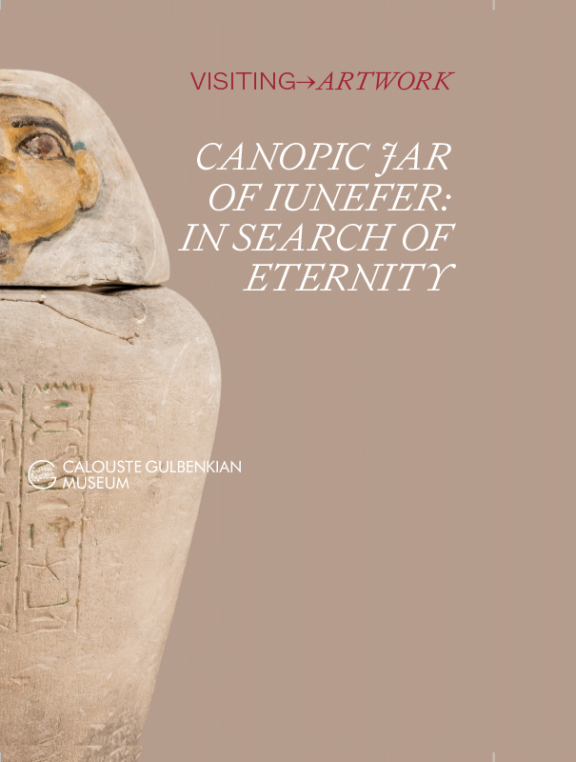Canopic Jar of Iunefer. In Search of Eternity

In the third edition of the Visiting Artwork programme, the Calouste Gulbenkian Museum welcomes the canopic jar of Iunefer, on loan from the Ny Carlsberg Glyptotek, in Copenhagen.
Canopic jars, or viscera jars, were a fundamental part of the process of embalming the dead. The full set was composed of four of these jars; each one held a specific organ and was dedicated to one of four Ancient Egyptian divinities who would protect the tomb.
Found in Hawara in 1912 by William Matthew Flinders Petrie, this canopic jar is thought to have contained the stomach of Iunefer, a repository supervisor who lived in Egypt in around 1800 B.C.E.
The publication accompanying the Museum’s third Visiting Artwork was written by three authors and is available in Portuguese and English. In the first text, Egyptologist Luís Araújo deciphers the hieroglyphics inscribed on the outside of the jar. Next, Jorge Rodrigues, curator of the Gulbenkian Museum, relates the canopic jar to the Egyptian antiquities in the collection brought together by Calouste Gulbenkian. Finally, Tine Bagh, curator of the Ny Carlsberg Glyptotek, writes about William Matthew Flinders Petrie, ancient Hawara and various events connected to the discovery of the canopic jar of Iunefer.
Technical information
- Texts:
- Jorge Rodrigues, Luís Araújo, Tine Bagh
- Language:
- Portuguese / English
- Edited:
- 2023
- Entity:
- Calouste Gulbenkian Museum
- Dimensions:
- 230mm x 165mm
- Cover:
- Paperback
- Pages:
- 64
- Original title:
- Canopic Jar of Iunefer. In Search of Eternity
- ISBN:
- 978-989-9119-10-9